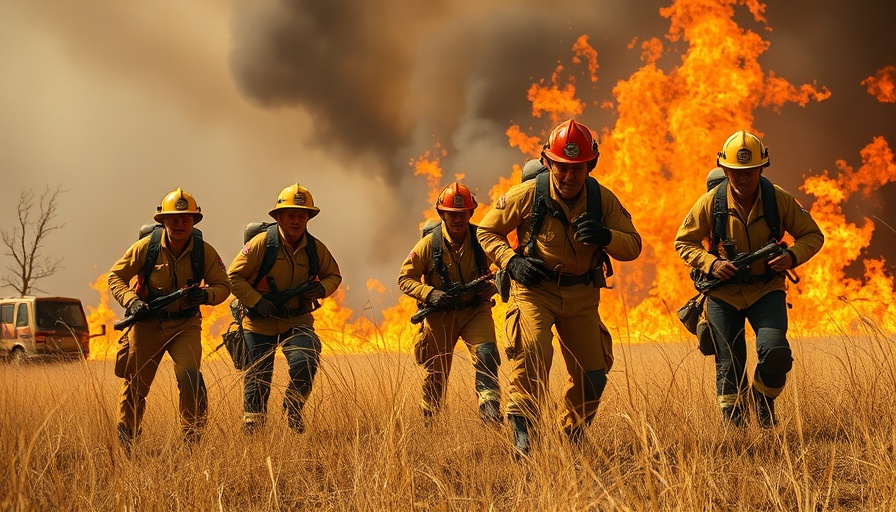
The Rising Threat of Wildfires in South Texas
As temperatures soar and drought conditions persist, South Texas faces a significant wildfire threat. Residents of San Antonio and surrounding areas must stay informed and prepared as they enter a critical period for fire hazards. The weather conditions have seen relative humidity plummet below 10%, creating the ideal environment for wildfires to ignite and spread uncontrollably. Understanding these risks is crucial for community safety and preparedness.
Historical Patterns of Wildfire Activity
It is essential to familiarize ourselves with the patterns of wildfire seasons in Texas to understand their recurrence. Recent history reveals that the fire season is particularly acute during the winter months (February to April) and summer months (August to October). There is a notable spike in fire warnings issued by the National Weather Service during late spring and early summer. Since 2006, March and April have seen some of the highest numbers of Red Flag Warnings, signaling extreme fire dangers.
The Role of Drought in Fire Risks
Drought significantly exacerbates the wildfire risks faced in Texas. With over half of the state currently experiencing some level of drought, the moisture content of vegetation decreases, rendering it increasingly flammable. The ongoing drought has not only parched the landscape but also contributed to conditions in which fires can spread with alarming speed, especially when accompanied by gusty winds expected in the coming days.
What to Watch For: Fire Weather Outlooks
The National Weather Service plays a pivotal role in providing updates and alerts regarding fire weather conditions. Residents should be vigilant about the following advisories:
- Red Flag Warnings: Issued under critical conditions such as high winds and low humidity.
- Fire Weather Watches: Announced when conditions favor fire development.
- Relative Humidity Notices: Indicating when humidity levels drop and increase fire potential.
Preparing for Wildfire Seasons
Texans are urged to prepare for the potential impacts of wildfires proactively. Key actions to take include:
- Stay informed of local fire weather alerts and heed advice from officials.
- Limit any activities that may spark flames, particularly during dry conditions.
- Create an emergency plan that includes safety protocols for all family members.
- Compile a supply kit containing essentials such as food, water, and medical supplies.
Community Response and Resources
The response to wildfires in Texas has been scaled up significantly. Governor Abbott increased the readiness level of the Texas Division of Emergency Management to ensure that resources support local communities effectively. Emergency services are well-equipped with firefighters, aircraft, and personnel prepared for rapid deployment. Local NGOs and governmental organizations work to ensure that assistance reaches affected areas swiftly.
Personal Responsibility and Community Awareness
Ultimately, individual responsibility plays a vital role in community safety. All residents should familiarize themselves with their surroundings, remain vigilant about fire alerts, and communicate effectively within their communities. The importance of collective awareness cannot be understated, as it enhances overall preparedness to combat the risks associated with wildfires.
Take Action: Stay Prepared and Informed
The upcoming months could pose severe challenges as South Texas navigates its heightened wildfire risks. It is crucial to stay informed, adhere to safety guidelines, and actively engage in community preparedness efforts. For continuous updates on weather and fire conditions, stay tuned to reliable local news outlets and utilize apps focused on weather alerts to keep your family safe. Remember, preparedness can save lives.
 Add Element
Add Element  Add Row
Add Row 



 Add Row
Add Row  Add
Add 


Write A Comment